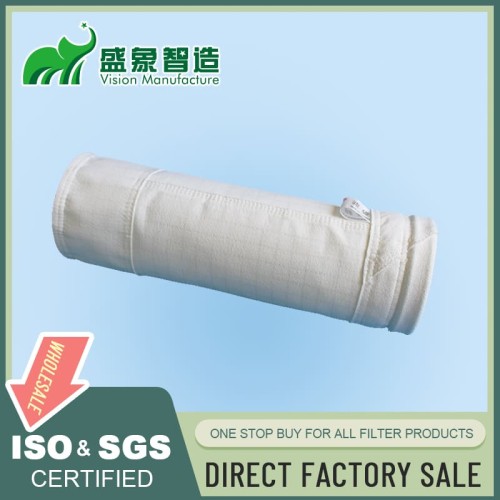
Maintenance and Troubleshooting of Polyester Filter Bags
Regular Inspection and Cleaning
Regular maintenance is crucial for the longevity and efficiency of polyester filter bags. Here are some key steps to follow:
Pressure and Temperature Checks: Frequently check the temperature and pressure gauges to ensure the system is operating within the manufacturer's guidelines. High pressure can indicate that the filter needs attention.
Visual Inspections: Regularly inspect the filter bags and housings for signs of corrosion, damage, or wear. Look for loose mouths, bag drops, or any other visible damage that could affect performance.
Cleaning with Compressed Air: Use compressed air to clean the filter bags, especially in dust collection systems. This helps remove dust and particles without damaging the fabric. Ensure the oil-water separator is cleaned frequently to prevent malfunction of the moving mechanisms.
Lubrication of Movable Parts: Lubricate all movable parts of the filter housing, such as stainless steel bolts and threads, to ensure easy movement and longevity. However, avoid over-greasing, which could cause damage.
Common Issues and Solutions
Identifying and addressing common issues promptly can prevent major problems and extend the life of the filter bags.
Increased Pressure: If the pressure at the entry point of the filter increases, it may indicate that the filter needs cleaning or replacement. Shut off the system, release all pressure, and either clean or replace the filter bag as necessary.
Condensation: Prevent condensation in the bag chamber, especially when operating under negative pressure. Condensation can cause the filter bag to become damp, leading to inefficient dust cleaning and potential blockage of the fabric holes.
Gasket Damage: Check and replace damaged gaskets and seals regularly to avoid faulty seals. Many manufacturers recommend replacing gaskets each time a pressurized housing is opened.
Blinding: Over time, filtered waste can become permanently imbedded in the filter fabric, a phenomenon known as "blinding." This reduces the filter's performance. Regular cleaning and eventual replacement are necessary to maintain efficiency.
Replacement Guidelines
Knowing when to replace polyester filter bags is critical for maintaining the performance of your filtration system.
Pressure Difference: Monitor the pressure difference between the inlet and outlet. When this difference reaches 0.05-0.1 Mpa, it is time to replace the filter bag to prevent over-pressure and potential rupture.
Cleaning Limits: Polyester filter bags can typically be cleaned between 12-24 times. Nomex and paper filter bags have different cleaning limits (3-6 times for Nomex). Regular cleaning can extend the life of the filter bags, but they will eventually need to be replaced.
Visual Inspection: If the filter bags show signs of significant wear, such as tears or excessive abrasion, they should be replaced immediately to prevent system malfunction.
Best Practices for Extending Filter Life
To maximize the lifespan of polyester filter bags, follow these best practices:
Proper Storage: Store filter bags and housings in a secure location away from corrosive products. Plug the openings to ensure the interior of the housing remains clean and free of contaminants. In sterile applications, use inert gases like nitrogen to prevent contamination.
Regular Testing of Security Equipment: Regularly test security equipment such as pressure gauges, relief systems, locking devices, temperature control devices, and leak warning systems to ensure optimum functionality. Replace any broken security equipment immediately.
Preventive Maintenance Schedule: Establish a regular maintenance schedule that includes checking control valves, pulse valves, and timers. This proactive approach helps in identifying and addressing potential issues before they become major problems.
Training and Authorization: Ensure that only trained and authorized employees maintain the filtration equipment to prevent damage or injury. Always shut down the system and release pressure before performing any maintenance tasks.
Conclusion
Maintaining and troubleshooting polyester filter bags requires a combination of regular inspections, proper cleaning techniques, and adherence to replacement guidelines. By following these best practices, you can extend the life of your filter bags, ensure the efficiency of your filtration system, and comply with safety and regulatory standards. Regular maintenance not only saves costs by prolonging the life of the filters but also ensures the overall health and performance of your industrial processes.

